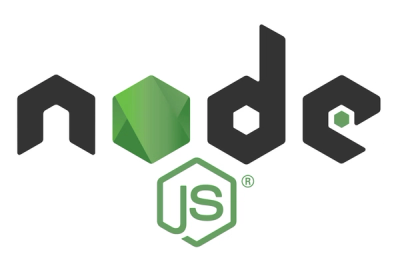
Security News
Django Joins curl in Pushing Back on AI Slop Security Reports
Django has updated its security policies to reject AI-generated vulnerability reports that include fabricated or unverifiable content.
pypette (to be read as pipette) is a module which makes building pipelines ridiculously simple, allowing users to control the flow with minimal instructions.
|Logo|
|pypiv| |pyv| |Build| |Licence|
pypette (to be read as pipette) is a module which makes building pipelines ridiculously simple, allowing users to control the flow with minimal instructions.
Using pip
.. code:: bash
pip install pypette
Directly from the repository
.. code:: bash
git clone https://github.com/csurfer/pypette.git
python pypette/setup.py install
Detailed documentation can be found at https://csurfer.github.io/pypette
Job
The basic unit of execution, say a python method or a callable.
.. code:: python
from pypette import Job
def print_hello():
print("Hello!")
def print_hello_msg(msg):
print("Hello " + msg + "!")
# Job without arguments
j1 = Job(print_hello)
# Job with arguments specified as argument list
j2 = Job(print_hello_msg, args=("pypette is simple",))
# Job with arguments specified as key word arguments
j3 = Job(print_hello_msg, kwargs={"msg":"pypette is simple"})
BashJob
The basic unit of execution, which runs a bash command.
.. code:: python
from pypette import BashJob
# Job with bash commands
b1 = BashJob(['ls', '-l'])
b2 = BashJob(['pwd'])
Pipe
Structure to specify the flow in which the jobs need to be executed. The whole
interface consists of only 4 methods.
.. code:: python
from pypette import Pipe
# 1. Create a new Pipe
p = Pipe('TestPipe')
# 2. Add jobs to execute. (Assuming job_list is a list of python/bash jobs)
# To run the jobs in job_list in order one after the other where each job
# waits for the job before it to finish.
p.add_jobs(job_list)
# To run the jobs in job_list parallelly and run the next step only after
# all jobs in job list finish.
p.add_jobs(job_list, run_in_parallel=True)
# Add jobs in a builder format.
p.add_stage(job1).add_stage(job2) # To add jobs in series.
p.add_stage(job1, job2) # To add jobs in parallel.
Building complex pipelines
Jobs submitted to pipeline should be callables i.e. structures which can be run. This means python methods, lambdas etc qualify.
What about Pipe itself?
Of course, it is a callable and you can submit a pipe object to be run along with regular jobs. This way you can build small pipelines which achieve a specific task and then combine them to create more complex pipelines.
.. code:: python
from pypette import BashJob, Job, Pipe
def welcome():
print("Welcome user!")
def havefun():
print("Have fun!")
def goodbye():
print("Goodbye!")
# Build a simple pipeline
p1 = Pipe('Fun')
p1.add_jobs([
Job(havefun),
])
# Include simple pipeline into a complicated pipeline
p2 = Pipe('Overall')
p2.add_jobs([
Job(welcome),
p1,
Job(goodbye),
BashJob(['ls', '-l']),
BashJob(['pwd'])
])
p2.run() # This first runs welcome, then runs p1 pipeline then runs goodbye.
Example pipeline
An example pipeline and its code are included in `examples`_ folder.
Visualizing the pipeline using graph()
Pipeline objects have a method called graph() which helps visualize the
pipeline within the comfort of your terminal. The graph is recursive in nature
and it visualizes everything that will be run if we call run() on the pipe
object.
Visualizing the top-level pipeline in examples/basic.py_ led to the
following visualization.
|Viz|
Running the entire pipeline.
The only thing you need to do at this point to run the entire pipeline is to
call ``run()`` on your pipeline object.
Reporting the entire pipeline.
The only thing you need to do at this point to get the report of entire
pipeline is to call report() on your pipeline object.
Bug Reports and Feature Requests
Please use `issue tracker`_ for reporting bugs or feature requests.
Development
~~~~~~~~~~~
Pull requests are most welcome. Kindly follow the steps suggested below:
1. Checkout the repository.
2. Make your changes and add/update relavent tests.
3. Install **`poetry`** using **`pip install poetry`**.
4. Run **`poetry install`** to create project's virtual environment.
5. Run tests using **`poetry run tox`** (Any python versions which you don't have checked out will fail this). Fix failing tests and repeat.
6. Make documentation changes that are relavant.
7. Install **`pre-commit`** using **`pip install pre-commit`** and run **`pre-commit run --all-files`** to do lint checks.
8. Generate documentation using **`poetry run sphinx-build -b html docs/ docs/_build/html`**.
9. Generate **`requirements.txt`** for automated testing using **`poetry export --dev --without-hashes -f requirements.txt > requirements.txt`**.
10. Commit the changes and raise a pull request.
Buy the developer a cup of coffee!
If you found the utility helpful you can buy me a cup of coffee using
|Donate|
.. |Logo| image:: https://i.imgur.com/MBu5x0h.png :width: 60% :target: https://pypi.python.org/pypi/pypette
.. |Donate| image:: https://www.paypalobjects.com/webstatic/en_US/i/btn/png/silver-pill-paypal-44px.png :target: https://www.paypal.com/cgi-bin/webscr?cmd=_donations&business=3BSBW7D45C4YN&lc=US¤cy_code=USD&bn=PP%2dDonationsBF%3abtn_donate_SM%2egif%3aNonHosted
.. _issue tracker: https://github.com/csurfer/pypette/issues .. _examples/basic.py: https://github.com/csurfer/pypette/tree/master/examples/basic.py .. _examples: https://github.com/csurfer/pypette/tree/master/examples
.. |Viz| image:: https://i.imgur.com/1PaPlD3.png :width: 200px
.. |Licence| image:: https://img.shields.io/badge/license-MIT-blue.svg :target: https://raw.githubusercontent.com/csurfer/pypette/master/LICENSE
.. |Build| image:: https://github.com/csurfer/pypette/actions/workflows/pytest.yml/badge.svg?branch=master :target: https://github.com/csurfer/pypette/actions/workflows/pytest.yml/badge.svg?branch=master
.. |pypiv| image:: https://img.shields.io/pypi/v/pypette.svg :target: https://pypi.python.org/pypi/pypette
.. |pyv| image:: https://img.shields.io/pypi/pyversions/pypette.svg :target: https://pypi.python.org/pypi/pypette
FAQs
pypette (to be read as pipette) is a module which makes building pipelines ridiculously simple, allowing users to control the flow with minimal instructions.
We found that pypette demonstrated a healthy version release cadence and project activity because the last version was released less than a year ago. It has 1 open source maintainer collaborating on the project.
Did you know?

Socket for GitHub automatically highlights issues in each pull request and monitors the health of all your open source dependencies. Discover the contents of your packages and block harmful activity before you install or update your dependencies.

Security News
Django has updated its security policies to reject AI-generated vulnerability reports that include fabricated or unverifiable content.

Security News
ECMAScript 2025 introduces Iterator Helpers, Set methods, JSON modules, and more in its latest spec update approved by Ecma in June 2025.

Security News
A new Node.js homepage button linking to paid support for EOL versions has sparked a heated discussion among contributors and the wider community.